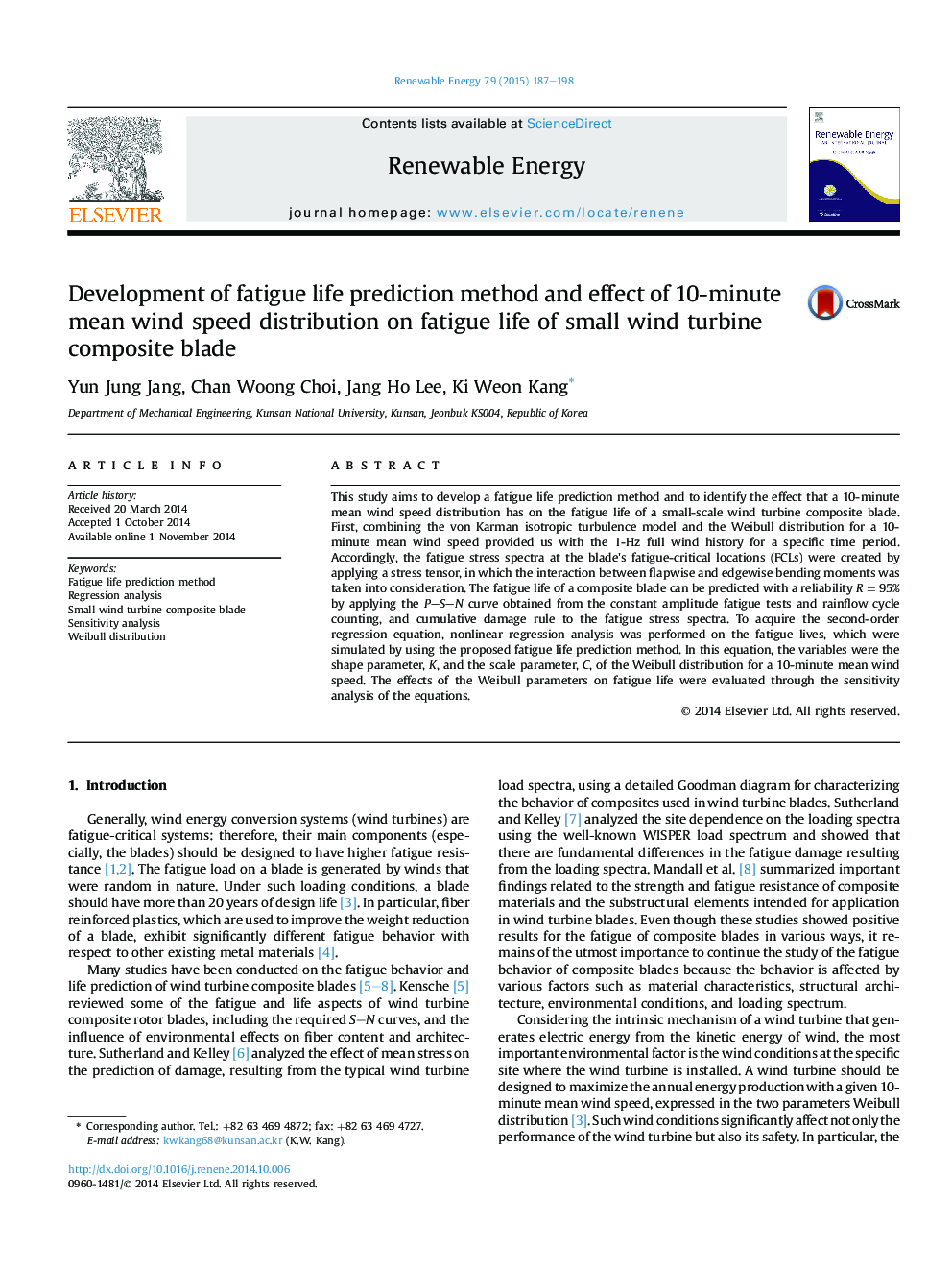| Article ID | Journal | Published Year | Pages | File Type |
|---|---|---|---|---|
| 299940 | Renewable Energy | 2015 | 12 Pages |
•We developed the fatigue stress spectrum at fatigue critical locations.•We estimated the fatigue life of blade using S–N curve and Miner's rule to spectrum.•We identified effects of Weibull parameter on fatigue life via sensitivity analysis.
This study aims to develop a fatigue life prediction method and to identify the effect that a 10-minute mean wind speed distribution has on the fatigue life of a small-scale wind turbine composite blade. First, combining the von Karman isotropic turbulence model and the Weibull distribution for a 10-minute mean wind speed provided us with the 1-Hz full wind history for a specific time period. Accordingly, the fatigue stress spectra at the blade's fatigue-critical locations (FCLs) were created by applying a stress tensor, in which the interaction between flapwise and edgewise bending moments was taken into consideration. The fatigue life of a composite blade can be predicted with a reliability R = 95% by applying the P–S–N curve obtained from the constant amplitude fatigue tests and rainflow cycle counting, and cumulative damage rule to the fatigue stress spectra. To acquire the second-order regression equation, nonlinear regression analysis was performed on the fatigue lives, which were simulated by using the proposed fatigue life prediction method. In this equation, the variables were the shape parameter, K, and the scale parameter, C, of the Weibull distribution for a 10-minute mean wind speed. The effects of the Weibull parameters on fatigue life were evaluated through the sensitivity analysis of the equations.
